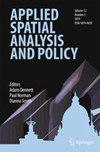摘要
旅游流的时空格局可以有效地说明游客的运动,对旅游目的地的规划和管理具有重要的指导作用。季节性波动明显,游客数量在第三季度达到峰值,在冬季急剧下降,特别是在偏远地区。社会网络分析发现,布达拉宫、纳木错湖和八廓街是突出的核心节点,是辐射影响较强的中心枢纽。相反,边缘节点吸引的是更专业的旅游群体。这种核心-边缘结构强调了旅游资源分布的空间不平衡,为有针对性的区域规划和旅游平衡发展提供了重要的见解。Spatio-temporal patterns of tourist flow can effectively illustrate the movements of tourists and play an important role in guiding the planning and management of tourist destinations. This study proposes a novel multi-scale analytical framework that combines spatio-temporal analysis and social network analysis to examine these patterns in Tibet, based on digital footprint data. Results revealed that tourist flows in Tibet exhibit a distinct hub-and-spoke pattern, characterized by high-frequency corridors connecting major destinations. Seasonal fluctuations are notable, with visitor volumes peaking in the third quarter and declining sharply during winter, especially in remote areas. Social network analysis identified prominent core nodes, Potala Palace, Namtso Lake, and Barkhor Street, serving as central hubs with strong radiative influence. In contrast, edge nodes attract more specialized tourist segments. This core–periphery structure underscores the spatial imbalance in tourism resource distribution, offering critical insights for targeted regional planning and balanced tourism development. These insights have practical applications in tourism planning in Tibet, thereby providing indispensable support for the sustainable development of tourism in plateau regions.

 求助内容:
求助内容: 应助结果提醒方式:
应助结果提醒方式:


